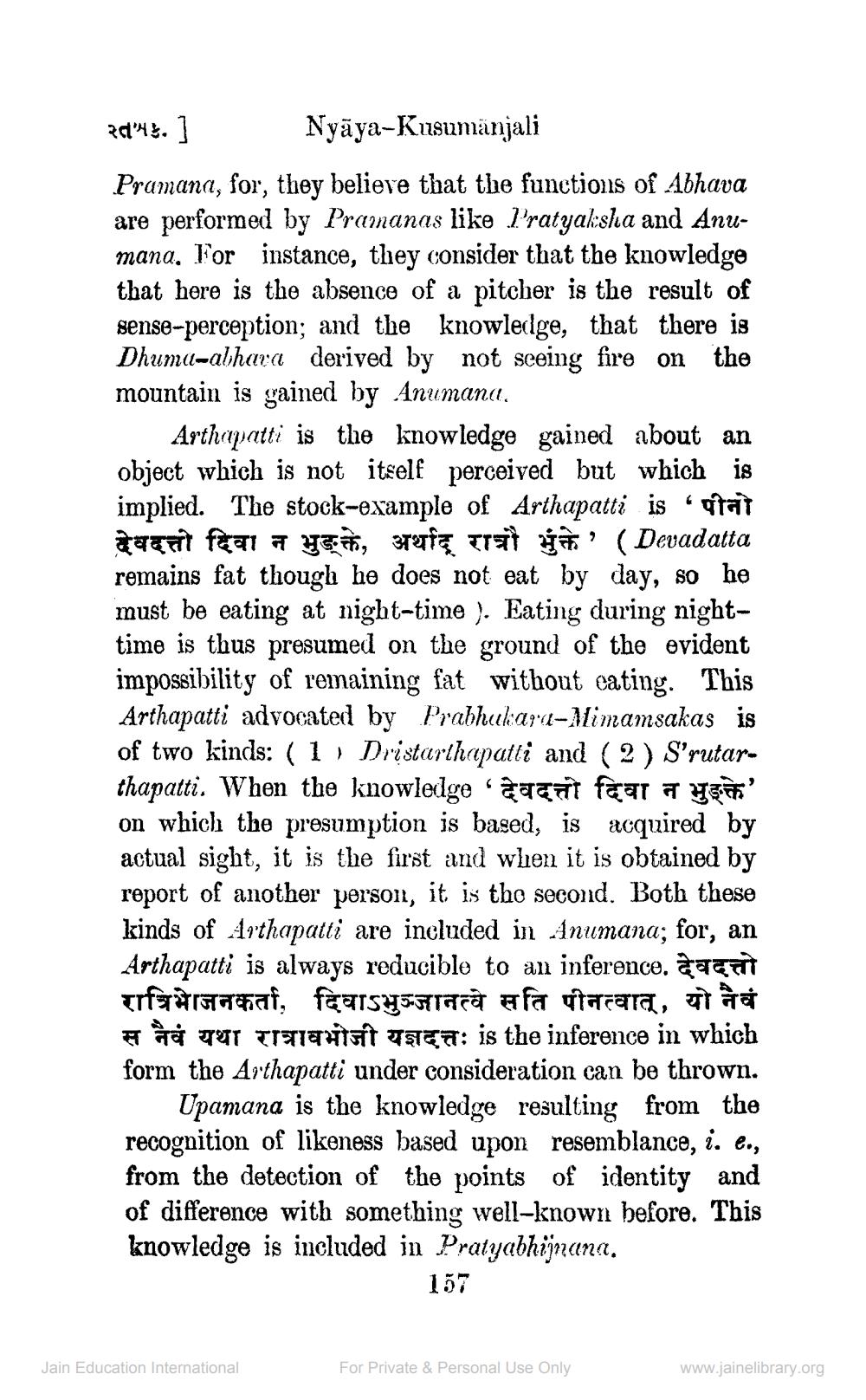________________
24°45. ] Nyāya-Kusumänjali Pramana, for, they believe that the functions of Abhava are performed by Prananas like Bratyaksha and Anumana, For instance, they consider that the knowledge that here is the absence of a pitcher is the result of sense-perception; and the knowledge, that there is Dhumu-alihava derived by not seeing fire on the mountain is gained by Anumana.
Arth patti is the knowledge gained about an object which is not itself perceived but which is implied. The stock-example of Arthapatti is grat
na fit fan a yea, Breie Truth ' (Devadatta remains fat though he does not eat by day, so he must be eating at night-time ). Eating during nighttime is thus presumed on the ground of the evident impossibility of remaining fat without eating. This Arthapatti advocated by Prabhukarı-Mimamsakas is of two kinds: (1) Dristarthapatti and ( 2 ) S’rutarthapatti. When the knowledge aacut fear o site' on which the presumption is based, is acquired by actual sight, it is the first and when it is obtained by report of another person, it is the second. Both these kinds of Arthapatti are included in Anumana; for, an Arthapatti is always reducible to an inference. daca रात्रिभोजनकर्ता, दिवाऽभुजानत्वे सति पीनत्वात् , यो नैवं
S TOT TITIQUtst ca: is the inference in which form the Arthapatti under consideration can be thrown.
Upamana is the knowledge resulting from the recognition of likeness based upon resemblance, i. e., from the detection of the points of identity and of difference with something well-known before. This knowledge is included in Pratyabhijnana.
157
Jain Education International
For Private & Personal Use Only
www.jainelibrary.org




